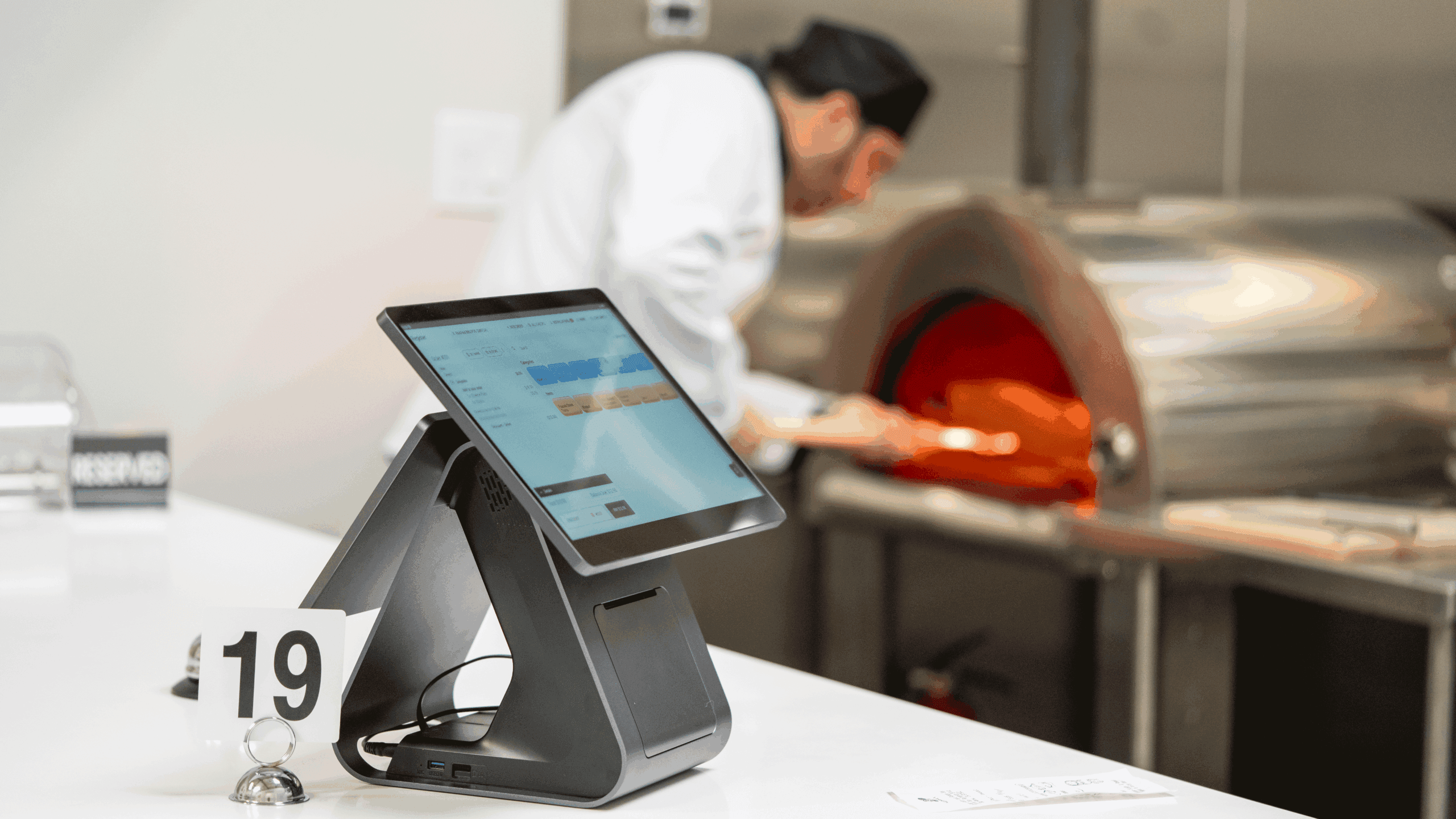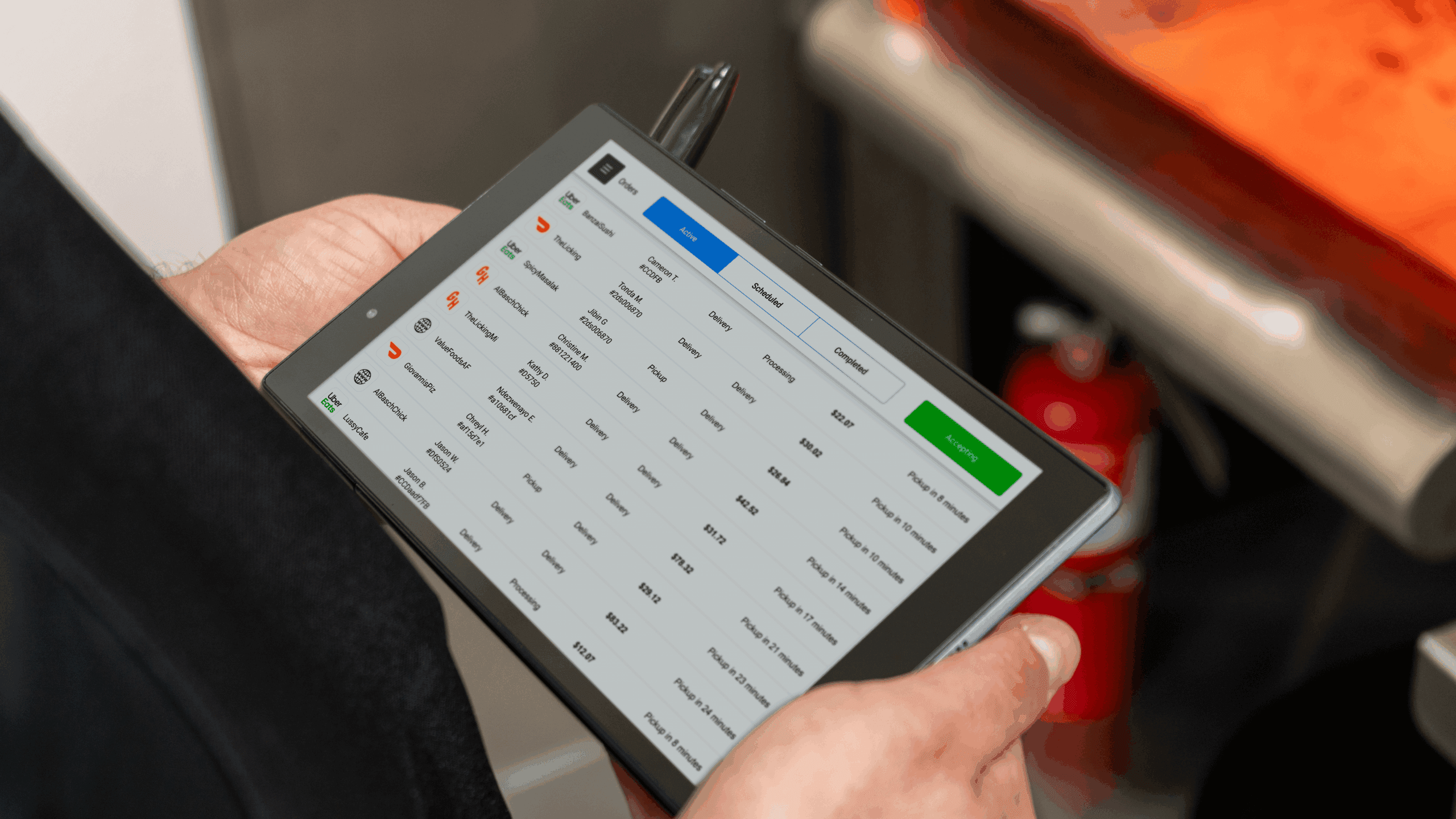From the grill sizzle to the clink of glasses, a thriving restaurant experience is a sensory feast. But what sets one restaurant apart from the rest?
It’s the power of a solid and memorable brand identity. A well-crafted brand will attract customers and leave a lasting impression that keeps them returning for more.
In this guide, Orders.co will explore the critical ingredients for creating a restaurant brand that stands out, sticks in customers’ minds, and leaves a lasting impact.
What is a Brand Identity?
A restaurant brand identity is a combination of elements that reflects the restaurant’s overall mission and atmosphere.
Each restaurant owner knows the key to a successful business is ensuring customers’ return.
Restaurants with a strong brand identity are typically recognizable in their industry, as they effectively communicate who they are and what they strive to achieve.
Creating a unique restaurant brand typically starts with an eye-catching logo, which is the foundation for all the brand’s visual elements.
It includes crafting consistent design elements across signage, menus, uniforms, and website design.
Complementing visuals with effective messaging in advertisements and on social media further helps to ensure that customers remain consistently aware of the restaurant’s values and offerings.
Ultimately, successful restaurant brands can engagingly notify customers about their services and provide a positive customer experience every time.
Importance of a Solid and Memorable Restaurant Branding
A restaurant brand is essential for long-term success. A brand should be developed to evoke the desired emotions and create brand loyalty that will last through years of consistency in brand voice and brand guidelines.
A strong brand identity can differentiate a restaurant from competitors, creating an inviting atmosphere for customers who relate to the brand’s values.
Utilizing brand features such as logos and specific typography will give customers a consistent experience across channels, whether they visit in person or check out the website.
Creating an impactful brand experience will ensure brand recognition increase customer satisfaction, and help the restaurant stay ahead of the competition.
The Key Elements of Restaurant Branding
Restaurant branding is crucial in drawing in potential customers and establishing an identity.
By making the appropriate choices for elements such as brand colors, fonts, logos, and slogans, restaurants can create their unique personality.
Additionally, by providing excellent customer service that reflects their brand message, they will further build an image of reliability among diners.
Quality menus with accurate pricing can also be a part of this strategy to drive customer reviews and recognition.
All of these components are crucial when crafting a mighty restaurant brand name, but it’s explore each element in detail:
Understanding Your Target Audience
It can be constructive for businesses to take the time to understand their target audience, as it provides insights into what design elements will make a lasting impression on customer service.
To start, creating a mood board of ideas, colors, and images that best represent your intended audience is essential.
When making your mission statement or goals, consider how they relate to your target market and the types of experiences they’re looking for.
Think about how you want them to feel when they engage with your brand, and use this information as a guide when choosing design elements that capture their attention and build loyalty.
Taking an informed approach will help ensure you hit the right notes in achieving customer satisfaction.
To understand your target audience, you need to do the following:
Demographic Research
Demographic research helps to understand the target audience by providing insight into critical characteristics such as:
Age: Understanding the age range of your target audience can help you determine the menu offerings, atmosphere, and overall brand image that will resonate with them.
Gender: Knowing the gender distribution of your target audience can help you tailor your marketing efforts and menu offerings.
Income: Understanding the income level of your target audience can help you determine the price points, menu offerings, and atmosphere that will appeal to them.
Location: Knowing the geographic location of your target audience can help you determine the type of cuisine, atmosphere, and marketing efforts that will resonate with them.
Lifestyle: Understanding the lifestyle and habits of your target audience can help you tailor your menu offerings, atmosphere, and marketing efforts to meet their needs and preferences.
By gathering this information, you can create a detailed customer persona that will guide your branding and marketing efforts to effectively reach and engage your target audience.
Competitor Analysis
Competitor analysis helps to understand the target audience by providing insight into the following:
Market trends: Understanding what types of cuisine, atmosphere, and marketing strategies are popular among similar restaurants can help determine what will appeal to your target audience.
Customer preferences: Observing the types of customers that frequent similar restaurants can help you understand your target audience’s demographic, lifestyle, and importance.
Competition: Knowing what your competitors offer regarding menu, atmosphere, and marketing can help you determine what sets your restaurant apart and will appeal to your target audience.
Market gaps: Identifying gaps in the market that your restaurant can fill, such as unique cuisine, innovative menu offerings, or a unique atmosphere, can help you differentiate your brand and appeal to your target audience.
By conducting a thorough competitor analysis, you can gain a deeper understanding of the market and your target audience, which can inform your branding and marketing efforts to reach and engage them effectively.
Customer Persona Development
Developing customer personas helps businesses understand their target audience by:
1. Identifying demographic, behavioral, and psychographic characteristics.
2. Understanding their needs, goals, and pain points
3. Building empathy and connection with the target audience
4. Improving customer experience and communication strategies
5. Aligning product/service offerings and marketing efforts with the target audience’s preferences
6. Making data-driven decisions based on personal insights.
Defining Your Brand Values and Personality
Your brand values and personality will be the foundation of your restaurant’s identity.
These core components should reflect who you are and what sets your restaurant apart from competitors.
To start, list the unique characteristics that define your business, such as a fun atmosphere, delicious food, or friendly customer service.
Once you have identified these traits, craft a mission statement that engagingly communicates your vision and values. This statement can serve as a guiding principle for all branding decisions.
From there, create a visual representation of your brand by selecting colors, fonts, images/logos that reflect your restaurant’s personality. The resulting combination will become recognizable to customers when they engage with various aspects of your business.
Here are the steps to do it:
Unique Selling Proposition
Creating a unique selling proposition (USP) will help differentiate your restaurant from competitors. A USP is a statement that communicates what sets your business apart in the marketplace.
For example, if you offer organic ingredients or vegan options, emphasize this in your messaging so customers can quickly recognize and remember the unique offerings of your restaurant.
This message should be used consistently across all channels – website, menus, signage, ads, etc. – to create an impactful brand experience.
Brand Values and Mission Statement
Creating a mission statement and values will help customers understand the core beliefs of your business.
The mission statement should be concise and clearly explain what your restaurant stands for and why it matters to customers. This message should be used consistently across all channels as well.
Additionally, defining brand values will help to guide decision-making on critical elements such as menu offerings and customer service.
Brand values should reflect your restaurant’s personality and ensure consistency in messaging and overall customer experience.
Your Inbox, Your Rules!
Tailor your newsletter with the topics you're most interested in.
Brand Personality and Tone of Voice
Creating a brand personality and tone of voice will help to engage customers with your restaurant.
By crafting your restaurant’s inviting, friendly, or humorous personality, customers will be more likely to remember and engage with the brand.
It can be done through design elements such as logos, colors, fonts, etc., and messaging across various channels such as social media and advertisements.
The tone of voice should also reflect your restaurant’s personality by using consistent and engaging language. Emojis and emotive words can create an inviting atmosphere for customers to enjoy when engaging with your business.
Designing your Visual Identity
If you own a restaurant, the visual identity you create is essential in establishing a successful business.
An effective visual identity should reflect core values and capture the attention of potential customers. With it, consumers may discern what makes your restaurant branding unique and, thus, challenging to market.
Therefore, investing in design services from professionals who understand the needs of this particular industry is essential to creating an engaging presence that will allow your business to stand out.
With their help, you can craft an eye-catching identity that matches your business’ core values while simultaneously appealing to a wide range of potential customers.
You need these elements to start:
Logo Design
Logo design is a crucial component of the success of restaurant branding. A graphic designer with experience in this field can help bring an image to life and create an iconic brand identity that customers will recognize.
Understanding colors, shapes, composition, typeface, and other elements will ensure the logo stands out among the competition. A style guide should also be created so that all graphic materials associated with the logo remain consistent throughout the branding process.
Ultimately, with a well-designed logo, customers will associate not just colors and images with your business but emotions that drive customer loyalty in the long term.
Color Scheme and Typography
Choosing an appropriate color scheme and typography for a restaurant brand is essential. The colors should be selected to reflect the brand’s personality while remaining attractive to customers.
It’s necessary that the colors not only represent the brand but also evoke certain emotions when seen by potential customers.
For example, many restaurants choose warm colors such as reds and oranges to create a feeling of comfort and energy. On the other hand, blues and greens can evoke a sense of refreshment and relaxation.
The typography should also be chosen carefully to ensure it is legible and read in various sizes. Furthermore, selecting fonts with either serif or sans-serif design will help maintain consistency across all branding materials.
Finally, it’s essential to have a style guide in place to ensure all branding materials are consistent and reflect the brand values.
Imagery and Graphics
Imagery and graphics are essential components of a successful branding strategy.
Professional photography or illustrations can create an inviting and exciting atmosphere for customers.
These visuals should be used consistently across all channels to maintain a cohesive look and feel that reflects your brand values.
Building a Consistent Brand Experience
Establishing a consistent branding experience is essential in any business venture. When customers enter a restaurant, they should know who they are dealing with and what to expect from the products, services, or atmosphere.
Consistent branding can be achieved in various ways, such as through marketing materials, physical design elements, customer service, and consistent branding across different channels.
Recognizing branding helps customers establish an image of the company and identify it in their everyday lives, ultimately resulting in long-term brand loyalty.
Menu Design
Menu design is essential for any restaurant branding because it helps customers quickly identify the food and drinks offered.
Menus should be easy to read, with transparent prices, descriptions, and allergen information. Diners should also be able to distinguish between vegetarian, vegan, dairy-free, or gluten-free options if available.
Additionally, photographing each menu item can help customers better understand what they are ordering and create an inviting atmosphere. The overall design of the menu should match the brand’s personality while remaining organized to make navigation simple.
Restaurant Dining Room Interior Design
The interior of a restaurant should be inviting and comfortable to encourage customers to stay and enjoy their experience.
Design elements like furniture, lighting, colors, artwork, and decorations all play a role in creating an atmosphere that reflects the brand’s identity.
A professional design team will work with you to create a space that captures your desired aesthetic while meeting customer needs such as comfort and accessibility.
Service and Customer Experience
Service and customer experience are also fundamental elements of a restaurant.
Your team should be able to provide consistent, high-quality service that resonates with customers. They should also be knowledgeable about the food and drinks offered and any special offers.
Get the Most out of Your Restaurant with a Strong Branding
So, creating a strong and memorable restaurant brand identity is crucial to success in the food industry.
By understanding your target audience, defining your unique value proposition, and consistently communicating your brand message through all touchpoints, you can differentiate yourself from the competition and establish a loyal customer base.
The impact of a strong brand identity can be far-reaching, from increased customer loyalty to higher profit margins.
Don’t wait; start building your restaurant brand identity today and watch your customers become brand ambassadors for your business.
Take action now and begin the journey toward creating a memorable and successful restaurant brand identity.



